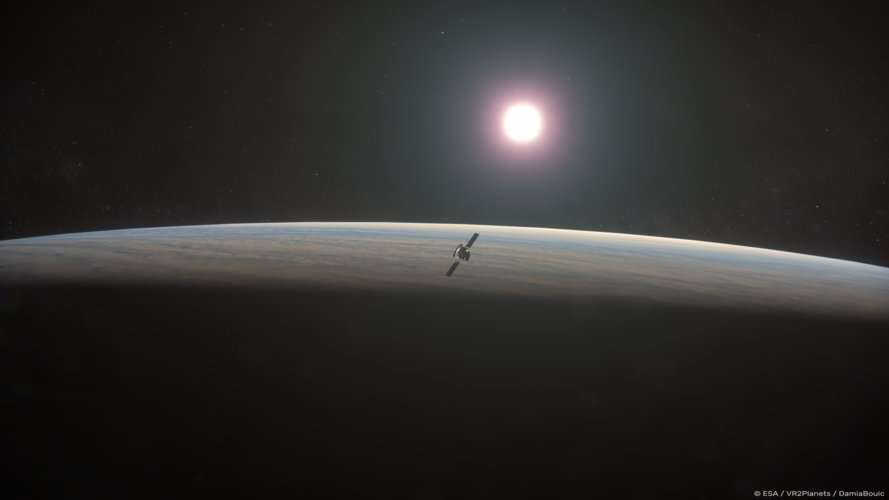

Access the video
Strong heritage and fruitful cooperation
EnVision will join ESA’s science fleet of Solar System explorers. These missions address two top-level science themes of ESA’s Cosmic Vision 2015–2025, namely: What are the conditions for planet formation and the emergence of life? and How does the Solar System work?
It will be the second European mission to Venus. ESA’s Venus Express (2005–2014) focused on the planet’s atmosphere, but also made dramatic discoveries that pointed to possible volcanic hotspots on the planet’s surface. (Read more about the science highlights of Venus Express here.) The study of the atmosphere has continued with JAXA's Akatsuki mission, which is still actively tracking atmospheric movement and Venusian weather.
Longer ago, NASA's Mariner and Pioneer Venus missions (1960s and 1970s), the Soviet Union's Venera and Vega missions (1960s to 1980s), and NASA's Magellan radar mapping mission (1990–1994) painted a picture of a dry world, with landscapes shaped by volcanoes and intense geological activity. They discovered vast plains marked by lava flows, bordered by highlands and mountains. EnVision’s VenSAR instrument, expected to be contributed by NASA, will map the Venusian surface at a much higher resolution than Magellan, distinguishing surface features more than ten times smaller.



